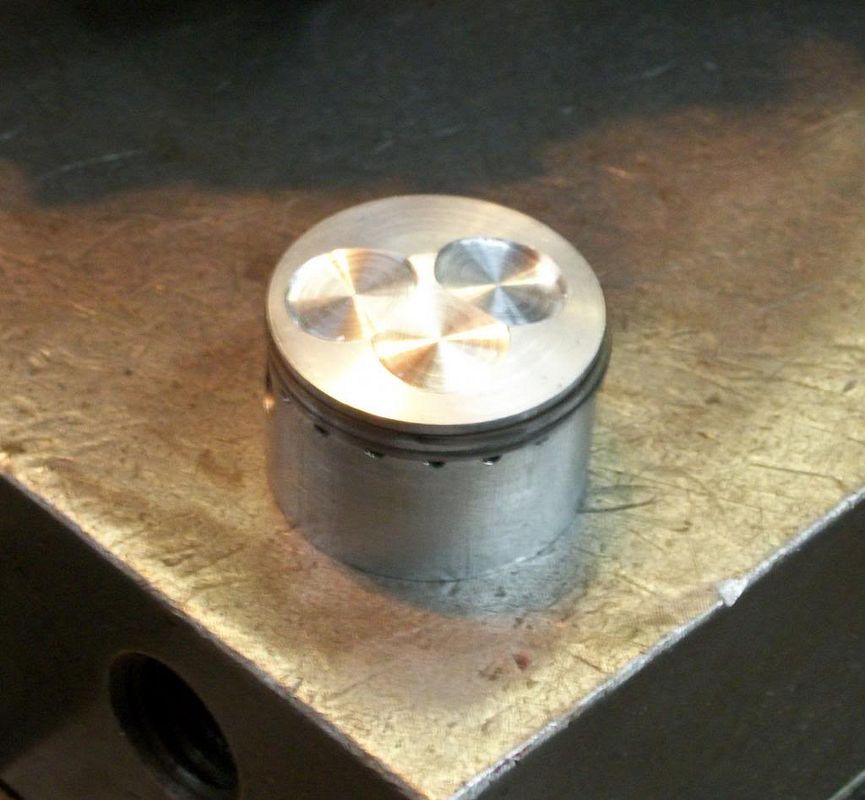The internal combustion engine in design and practice. Charles Fayette Taylor
http://books.google.com/books?id=mX1-OJBQ6ngC&printsec=frontcover#v=onepage&q&f=false
Read it, believe it, but dont outbid me on ebay when I finally find a copy with money in my pocket.

I have had the pleasure of a copy at my disposal from a good engineering library in the past. Its indispensable when you want to get serious about designing your own engines. Since it was published it has been the bible of the industry.
It mentions piston speed being the basic design anchor for any engine power requirement. This makes sense, as its mentioned piston assembly friction is almost half of the whole engine, and speeds are generally 5-15 meters second.
This is the piston for my last engine. Its a compromise of the new and the old. Dia .980" and height about .6, 15degree dome with three .040 reliefs. I had plenty of room so no need to cut the skirt, but in a nod to more modern design I did move the rings and pin as high as possible. There are so many things to handle with a new design you dont tend to be so revolutionary with everything at once, but I do try to be evolutionary.











